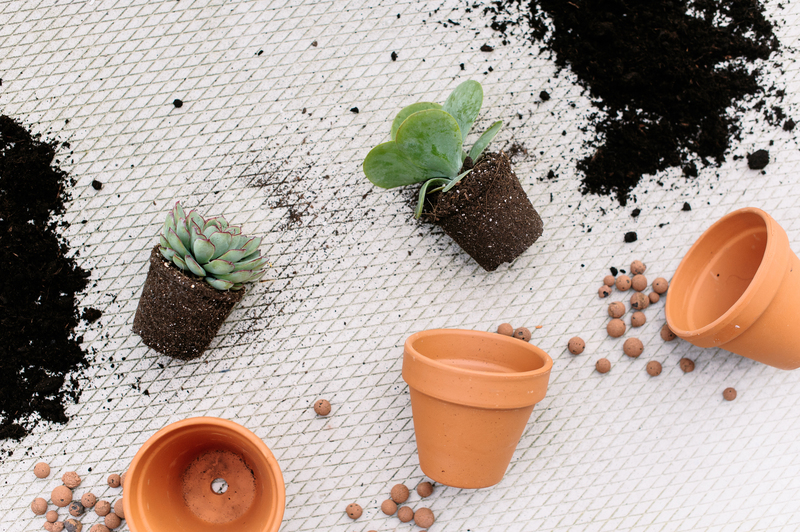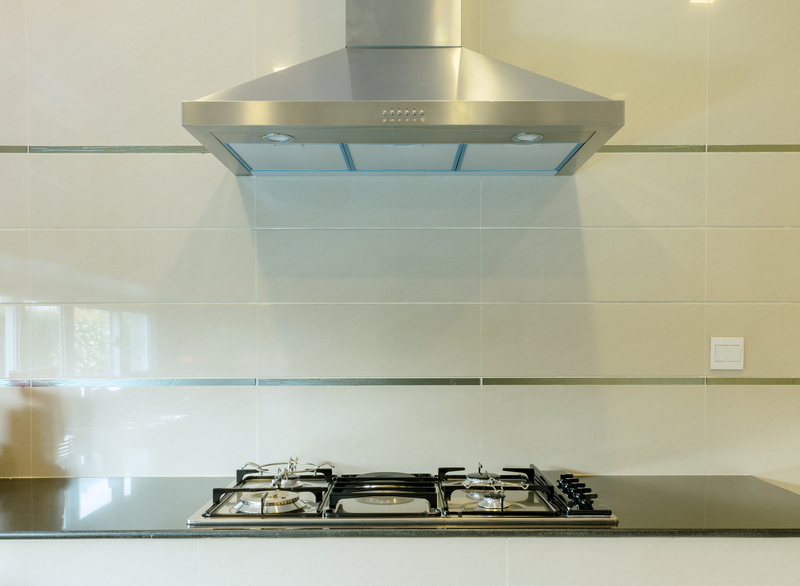Keep Your Window Sills Spotless by Fighting Mould Issues
Posted on 23/09/2025
Keep Your Window Sills Spotless by Fighting Mould Issues
Window sills are a charming feature in most homes, framing your view of the world outside and letting in precious natural light. However, they are also one of the most susceptible areas for unsightly and potentially hazardous mould growth. A mouldy window sill not only spoils the look of a room but can negatively impact indoor air quality and even damage property value.
In this comprehensive guide, you'll discover how to keep your window sills spotless by fighting mould issues, learn the common causes of mildew and mould, and explore actionable steps for prevention and long-term maintenance. Keep reading for expert advice on keeping your window sills healthy, hygienic, and beautiful year-round!

Understanding the Root of Mould Growth on Window Sills
Mould and mildew thrive in damp, poorly ventilated areas. Your window sills - constantly exposed to condensation, cold drafts, and, at times, leaky windows - create the perfect breeding ground for these pesky fungi. Understanding what causes mould to form on window sills is the first crucial step in combating and preventing it.
Common Causes of Window Sill Mould
- Condensation: Fluctuations in indoor and outdoor temperature produce moisture, which collects on window glass and sills.
- Poor Ventilation: Rooms with little airflow trap humidity, allowing mould spores to settle and multiply.
- Water Leaks: Damaged or worn window seals and frames let rainwater seep in, keeping sill surfaces persistently moist.
- Dust and Organic Material: Accumulated dust and plant debris provide nutrients to fuel mould growth on window ledges.
Why Mould Growth on Window Sills is a Problem
The presence of mould on your window sills is not just a cosmetic issue. Persistent mould buildup can:
- Trigger allergies and respiratory issues due to the release of spores.
- Causally degrade wooden sills and window frames, leading to costly repairs.
- Spread to curtains, walls, and surrounding areas, making cleaning difficult over time.
- Decrease the aesthetic and potential resale value of your property.
How to Spot and Identify Mould on Window Sills
Early detection is key to keeping your window sills spotless and mould-free. Here are some telltale signs that there may be a mould issue:
- Visible Growth: Black, green, grey, or brown spots or fluffy patches on wooden or painted sills.
- Damp, Musty Odours: A persistent earthy smell even after opening your windows for fresh air.
- Peeling or Bubbling Paint: Moisture buildup under paint causes the surface to flake, often with mould present underneath.
- Warped or Stained Wood: Ongoing dampness can warp wooden sills or leave unsightly stains if not addressed.
If any of these symptoms are present, it's important to act quickly to clean mould from your window sills and prevent it from spreading.
DIY Steps to Clean Mould Off Window Sills
You can remove mould from window sills in a few simple steps using safe, household cleaning products. For minor outbreaks, the following method is effective and environmentally friendly:
What You'll Need
- Protective gloves
- Face mask
- Soft-bristle brush or old toothbrush
- Microfiber cloths
- Bucket of warm soapy water
- White vinegar or hydrogen peroxide
- Baking soda (optional for extra scrubbing power)
Step-by-Step Guide to Mould Removal
- Open the window to improve ventilation. Wear gloves and a mask to protect yourself from spores.
- Wipe down the sill with a dry cloth to remove loose dust, mould spores, and debris.
-
Apply cleaning solution:
- For painted or plastic sills: Mix equal parts white vinegar and water and spray onto the affected areas.
- For wooden sills: Use hydrogen peroxide diluted at a 3% concentration.
- Let the solution sit for at least 15 minutes to kill mould bacteria.
- Scrub gently with your brush, paying special attention to crevices and corners.
- Rinse with a clean damp cloth and dry thoroughly with another cloth.
- Optional: Sprinkle baking soda and leave it for 15 minutes before wiping to neutralize any odors.
Important: For persistent or widespread mould, or if you have a health condition, always contact a professional remediation service.
Preventative Measures: How to Keep Mould Away from Window Sills
While regular cleaning is vital, preventing mould growth on window sills is the most effective strategy. Here's how to do it:
Boosting Ventilation and Reducing Moisture
- Open windows whenever possible to encourage fresh air and reduce indoor humidity.
- Use extractor fans in kitchens and bathrooms, where steam and moisture accumulate.
- Install a dehumidifier in particularly damp rooms to lower moisture levels and stop the formation of window sill mould.
- Treat condensation daily: Wipe away any water droplets you find on window panes or sills, particularly in the morning.
Maintaining Window Frames and Seals
- Inspect seals and caulking regularly for cracks or gaps where moisture can enter. Reapply as soon as wear is noticed.
- Repair leaky windows immediately to prevent water ingress and potential mould outbreaks.
- Keep window tracks clear of debris that can trap water and foster mildew.
Keep Window Sills Dry and Clean
- Dust your window sills weekly with a microfiber cloth to eliminate loose spores and dirt.
- Refinish wooden sills with a water-resistant varnish or paint to create a protective barrier against moisture and prevent window sill mildew.
- Avoid placing wet items or potted plants directly on sills, as drainage can contribute to dampness.
Natural and Eco-Friendly Mould-Fighting Solutions
For eco-conscious homeowners seeking sustainable options, nature offers a range of powerful mould prevention solutions for window sills:
Effective Anti-Mould Home Remedies
- White Vinegar: Naturally acidic, vinegar breaks down mould structures and acts as both a cleaning agent and a preventive spray.
- Tea Tree Oil: Mix 1 teaspoon in a spray bottle of water and mist on sills for an antimicrobial boost.
- Baking Soda: Not only does it help deodorize, but it also gently scrubs away residue without damaging surfaces.
- Eucalyptus Oil: Known for its anti-fungal effects, it can be added to your usual cleaning routine.
Note: Always test a small patch first to confirm your window sill's finish isn't affected by new natural products.
Long-Term Maintenance: How to Keep Your Window Sills Spotless
Consistency is vital in preventing recurring mould on window sills. Create a simple maintenance routine that includes:
- Monthly Deep Cleaning: Use the steps above every month, even if no visible mould is present.
- Check for Drafts and Leaks: Especially after storms or during seasonal change, ensure your window insulation is intact.
- Schedule Professional Inspections: If your home is older or you notice ongoing moisture issues, consider a yearly visit from a window or mould expert.
- Replace Problem Windows: Upgrading to double-glazed or modern sealed windows can drastically cut condensation.
The Role of Humidity in Mould Prevention
High humidity (over 60%) makes it nearly impossible to prevent window sill mould formation. Use a hygrometer to track moisture levels in your home, especially during winter or in humid climates, and adjust accordingly.

Frequently Asked Questions (FAQs) About Window Sill Mould
Is window sill mould dangerous?
Mould can be hazardous to your health, especially for those with allergies, asthma, or other respiratory issues. It releases spores that can irritate airways and cause symptoms such as sneezing, coughing, skin reactions, and more severe respiratory problems over time.
What is the best cleaner for mould on window sills?
Natural cleaners such as white vinegar and diluted hydrogen peroxide prove highly effective and safe on both wooden and PVC window sills. Commercial anti-mould sprays are also available for stubborn outbreaks, but should always be used with proper ventilation and caution.
Will painting over mould fix the issue?
Painting over mould does not remove the underlying problem and may cause it to return quickly or spread beneath the new paint layer. Always clean and disinfect thoroughly before refinishing the surface.
Conclusion: Keep Your Window Sills Spotless and Your Home Mould-Free
Maintaining spotless window sills free from mould requires a blend of cleaning, regular inspections, and preventative care. By addressing moisture, improving ventilation, and staying consistent with your cleaning routine, you can enjoy clean, beautiful window sills throughout the year.
If you notice persistent mould or damage to your window structure, seek professional assistance to keep your living space safe and healthy. Don't let mould and mildew take away the charm of your windows. Use the strategies outlined above to preserve your home's beauty and your family's well-being - starting with your window sills!
Summary Checklist: How to Fight Window Sill Mould
- Inspect window sills weekly.
- Remove any visible mould at first sight.
- Improve home ventilation.
- Address leaks and condensation promptly.
- Use natural or commercial mould removers as needed.
- Maintain a regular cleaning routine.
Keep your window sills spotless by fighting mould issues--and let every room in your house shine with cleanliness and health!



